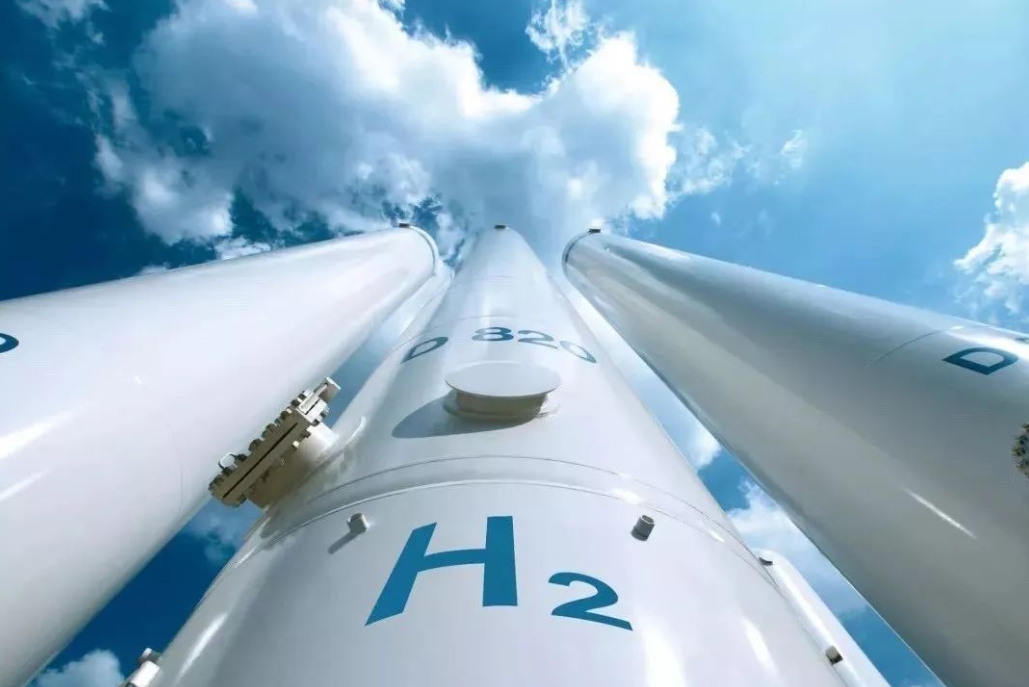The regional hubs are networks of hydrogen producers and consumers that will be linked with new and existing infrastructure. The Biden administration wants to scale up clean hydrogen output to 10 million metric tons of the fuel by 2030 and 50 million tons by 2050, a fivefold increase from today.
The following is a list of the winning hydrogen hub proposals:
MID-ATLANTIC HUB
Pennsylvania, Delaware, New Jersey, awarded $750 million.
The money will help unlock hydrogen-driven decarbonization in the Mid-Atlantic and repurpose historic oil infrastructure. The project will develop renewable hydrogen production facilities powered by renewable energy and nuclear electricity.
Partners include Air Liquide, DuPont (DD.N), Enbridge (ENB.TO) and others. Full details can be seen here.
Job creation expectations: 14,400 construction jobs and 6,400 permanent jobs.
APPALACHIAN HUB
West Virginia, Ohio, Pennsylvania, awarded $925 million.
This hub will seek to leverage the region’s ample access to low-cost natural gas to produce low-cost clean hydrogen and permanently and safely store the associated carbon emissions.
Partners include EQT Corp (EQT.N) and GTI Energy (GTR.AX). Full details can be seen here.
Job creation expectations: 18,000 construction jobs and more than 3,000 permanent jobs.
CALIFORNIA HUB
California, awarded $1.2 billion.
With the largest price tag, the California hub will leverage the state's existing clean energy technology to produce hydrogen exclusively from renewable energy and biomass. The administration hopes it will provide a blueprint for decarbonizing public transportation, heavy-duty trucking, and port operations.
Partners include Chevron (CVX.N), Bosch, Microsoft (MSFT.O) and others. Full details can be seen here.
Job creation expectations: 130,000 construction jobs and 90,000 permanent jobs.
GULF COAST HUB
Texas, awarded $1.2 billion.
Centered in Houston, the energy capital of the U.S., the hub plans for large-scale hydrogen production through natural gas with carbon capture and renewables-powered electrolysis.
The hub is led by major industry players, including Exxon Mobil (XOM.N), Chevron Corp, Air Liquide, Mitsubishi Power Americas, Orsted, AES Corp (AES.N) and Sempra Infrastructure. Amazon (AMZN.O) is among the hub's expected end users. Full details can be seen here.
Job creation expectations: 35,000 construction jobs and 10,000 permanent jobs.
HEARTLAND HUB
Minnesota, North Dakota and South Dakota, awarded $925 million.
The hub seeks to leverage the region's energy resources to help decarbonize the agricultural sector's production of fertilizer, decrease the regional cost of clean hydrogen and advance the use of clean hydrogen in electric generation and for cold climate space heating.
Partners include Xcel Energy (XEL.O), Marathon Petroleum Corp (MPC.N) and TC Energy (TRP.TO). Full details can be seen here.
Job creation expectations: 3,067 construction jobs and 703 permanent jobs.
MIDWEST HUB
Illinois, Indiana and Michigan, awarded $1 billion.
Centered in the U.S. industrial and transportation corridor, the hub will power steel and glass production, power generation, refining, heavy-duty transportation and sustainable aviation fuel.
Partners include Air Liquide, Arcellor Mittal, BP (BP.L) and others. Full details can be seen here.
Job creation expectations: 12,100 construction jobs and 1,500 permanent jobs.
PACIFIC NORTHWEST HUB
Washington, Oregon and Montana, awarded $1 billion.
This hub will make clean hydrogen exclusively from renewable sources. The administration hopes this hub's scale will play a key role in driving down electrolyzer costs and make hydrogen more affordable.
Partners include Air Liquide, Amazon, Mitsubishi, and others. Full details can be seen here.
Job creation expectations: 8,050 construction jobs and 350 permanent jobs.
